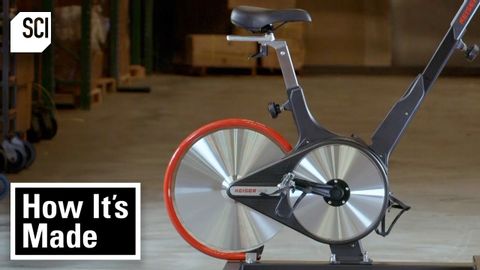
Subtitles & vocabulary
Learn the Intricate Crafting of Stationary Bikes | How It's Made | Science Channel
00
Joy Hsu posted on 2023/10/21Save
Video vocabulary
develop
US /dɪˈvɛləp/
・
UK /dɪ'veləp/
- Verb (Transitive/Intransitive)
- To explain something in steps and in detail
- To create or think of something
A1TOEIC
More precise
US /prɪˈsaɪs/
・
UK /prɪ'saɪs/
- Adjective
- (Of language details etc.) Very accurate and exact
- (Of a time, place, quality) exact
A2TOEIC
More align
US /əˈlaɪn/
・
UK /əˈlaɪn/
- Transitive Verb
- To arrange (e.g. objects) in line with one another
- Intransitive Verb
- To be in a line or in the correct position in relation to something else.
B2
More gear
US /ɡɪr/
・
UK /ɡɪə(r)/
- Verb (Transitive/Intransitive)
- To aim at or prepare yourself for something
- Noun (Countable/Uncountable)
- A speed selector connected to an engine
- Special clothes you use for a purpose
B1
More Use Energy
Unlock All Vocabulary
Unlock pronunciation, explanations, and filters
